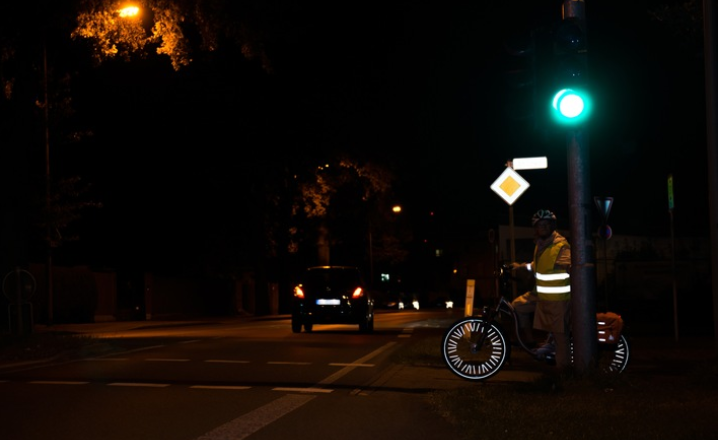The days are getting shorter and the dusk and darkness that start earlier mean that pedestrians, cyclists, and motorists are at an increased risk in road traffic. According to information from the Federal Statistical Office, in 1971, 1,088 people were killed in dusk and darkness in 74,888 accidents involving personal injury; 98,197 have been injured, of which 18,212 have been injured.
“The accident risk of darkness is still underestimated by many road users,” says the Chief Executive of the German Road Safety Council (DVR) Christian Kellner. So many pedestrians are traveling in dark clothes. “You do not realize how late they are perceived by other road users,” Kellner describes the danger. A dark-clad pedestrian was seen by a motorist in poor visibility only from about 25 meters away. “The stopping distance of a car is approximately 28 meters in the event of a danger braking according to the common rule of thumb at a speed of 50. Thus, the vehicle cannot be stopped in time if the passerby enters the roadway”, explains the DVR General Manager. However, when a pedestrian wears clothing with reflective materials, his visibility improves up to 140 meters.
Therefore, not only for children but also for adults, clothing or bags with reflective materials are again in safety in the dark. They directly throwback the headlight of motor vehicles or bicycles and increase visibility. “Safety accessories and clothing made from retro-reflective fabric are identified by consumers as having the designation DIN EN 13356. Luminous surfaces on school bags are marked with DIN 58124,” explains Kellner. Good visibility is also important for cyclists. Here, for example, a safety vest worn over clothing can significantly increase safety. The vest should comply with the standard EN ISO 20471. Cyclists should also check the lighting on the bike. Are all the reflectors available and the lighting system ready to work?
Motorists can also contribute to improving traffic safety by adapting their driving style to visibility conditions and traveling more slowly. Before the start of the journey, drivers should ensure good visibility and completely scratch out fogged or frosted window panes. A small open space creates only a very narrow field of view or increases the risk of the “blind spot” in curves. Also important are antifreeze in the windscreen washer and wipers that leave no streaks. “The headlights must be free of dirt and work properly,” Kellner emphasizes. The car industry and the German traffic guard offer again in October free flight tests in which the function and setting of the vehicle lighting are checked.
Applies to car and motorcycle riders that greater distance to the vehicle ahead and speed adapted to the poorer visibility conditions are important. Autumn leaves and rain turn the road into a slide with extended braking distance. Increased smoothness due tonight frost is especially noticeable in the early morning hours under bridges and on shady sections.
The dark days can also affect well-being: quite a few people respond to the withdrawal of sunlight with increased release of the hormone melatonin, which can lead to depression and listlessness. Countermeasures can be with vitamin-rich nutrition and exercise in the fresh air in daylight.
